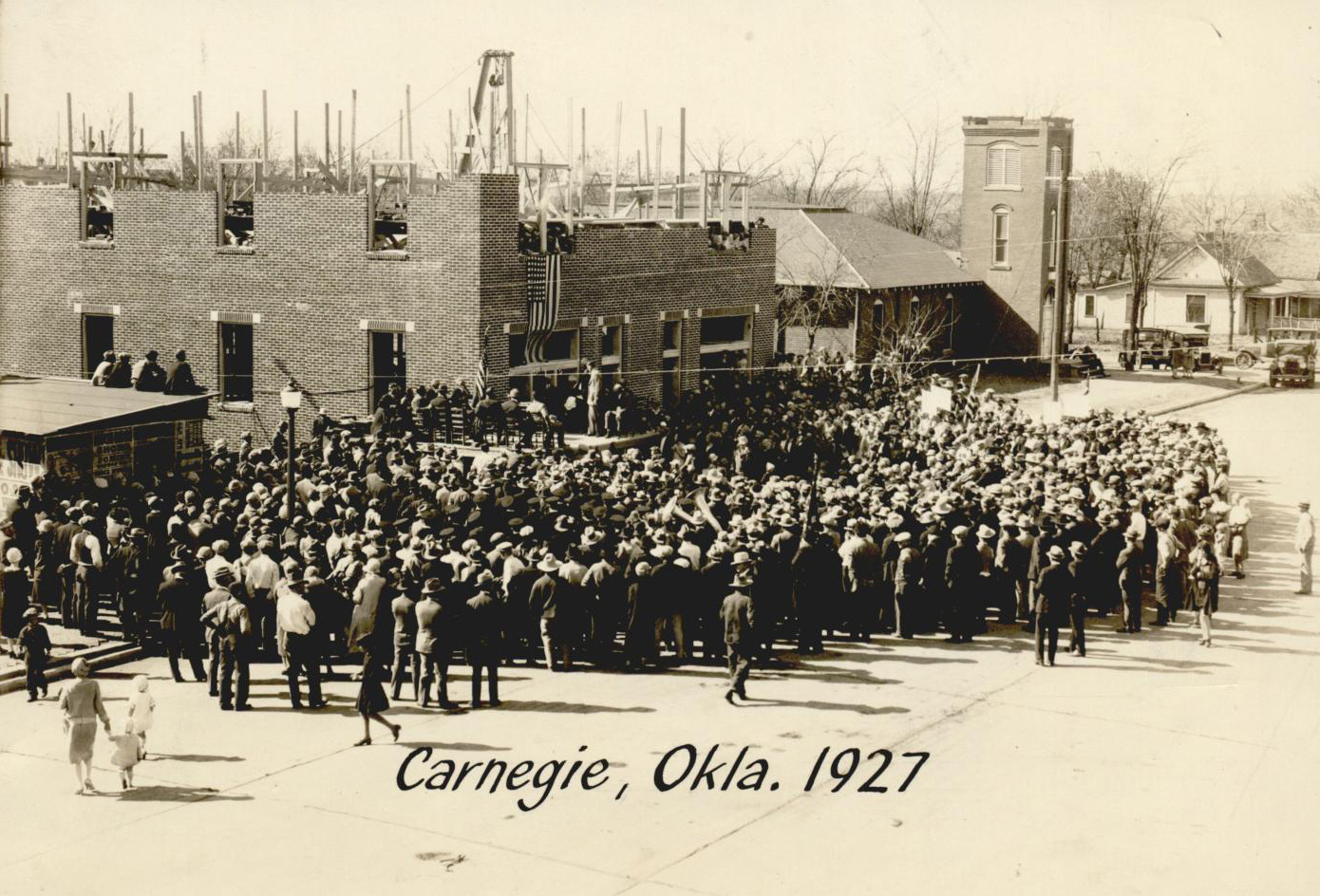
CARNEGIE.
Carnegie, Oklahoma, is located on the western edge of Caddo County, almost due west of Anadarko twenty-seven miles. The town is situated on the intersection of State Highways 58 and 9, just south of the Washita River. Early settlement in the area straddled both sides of the Washita River with the early community being called Latham. As there was already a town by that name in the territory, the settlement changed its name to Carnegie, in honor of steel magnate and philanthropist Andrew Carnegie. Although the Carnegie post office was established December 28, 1901, lots within the townsite on the south side of the river were not sold by the Carnegie Townsite Company, managed by Frank Rickey and Dan W. Peery, until 1903.
Throughout its history Carnegie has relied on the surrounding agriculture community for much of its economic base. Located midway between Mangum and Chickasha on the Chicago, Rock Island and Pacific Railway line, the town boomed in the 1910s and 1920s as nearby farmers transported their goods, including cotton, wheat, broomcorn, cattle, hogs, and poultry. By the early 1930s five cotton gins operated in Carnegie, four of which remained in operation through World War II. While agriculture remained the mainstay of the community for the next four decades, Carnegie was unable to regain its pre–Great Depression heights. In the 1970s oil briefly displaced agriculture as the main economic force, and the town once again thrived. This boom was short lived, as the oil industry in Oklahoma fell in the 1980s.
Carnegie incorporated in 1906, and within a year it had a population of 491. Three years later the official federal census recorded a population of 835. Development within the town was moderate through the 1910s, with the 1920 census recording 1,150 residents, an addition of 315. The 1920s proved to be the decade of growth for Carnegie. The population grew by 913 citizens to its all-time high of 2,063 in 1930. As was common, the trying years of the 1930s resulted in a loss of residents, as Carnegie's population fell to 1,740 by 1940. The number of residents continued to decline until the 1960s. In 1950 the population was recorded at 1,719 and in 1960, an even 1,500 lived there. In 1970 the population regained and barely passed the 1950 census to reach 1,723. Growth accelerated in the 1970s to bring Carnegie over the two thousand mark for the second time in the twentieth century. From 2,016 in 1980, however, the population again declined, so that in 1990 the number of residents was 1,593. Rebounding slightly, the town population in 2000 was recorded at 1,637 and in 2010 at 1,723. In April 2020 the census reported 1,422 residents.
In January 1904 the Carnegie Herald began publication, and it continues to be the town's primary newspaper. Other newspapers have included the Kiowa Indian News, which published between 1979 and 1994, and the Carnegie Democrat, in print for a short period in 1911. The community operates under the mayor-council form of government.







